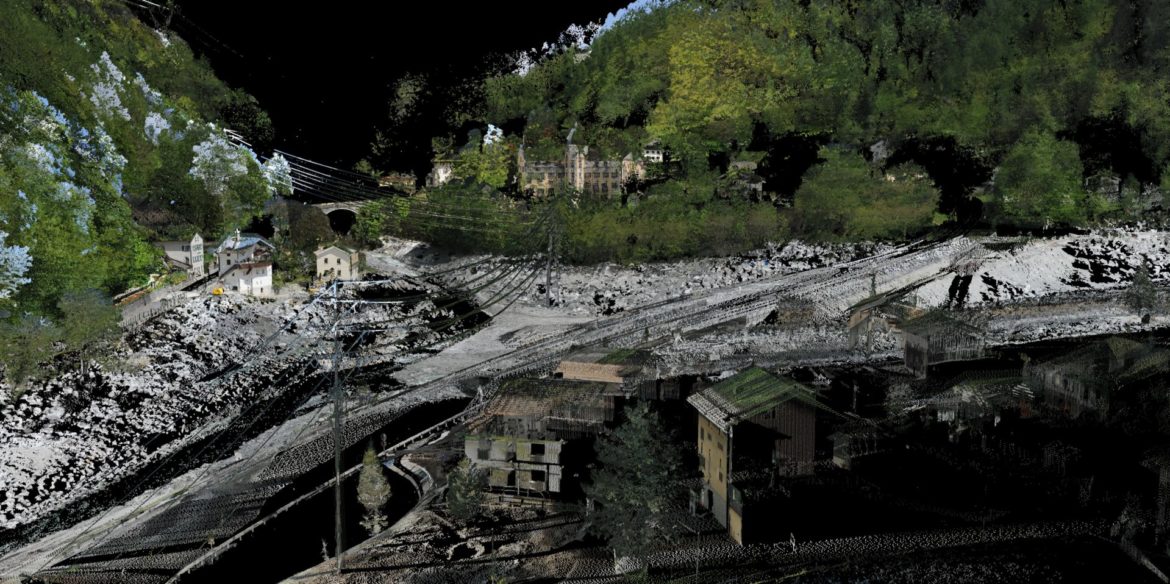Designing the future
From autumn, ETH Zurich will offer a Master’s programme in Landscape Architecture – a first for a Swiss university. The demand for landscape architects is greater than ever, say professors Christoph Girot and Teresa Galí-Izard.

Mr Girot, why do we need new landscape architects?
Christophe Girot: That question reflects a longstanding, fundamental attitude in Switzerland: many people thought we didn’t need landscape design – we have mountains, we have nature – everything is fine. But what if suddenly everything isn’t fine anymore? If we have to redesign cities to keep them cooler? So that they are healthier for people? These are very weighty issues.
…and for which we have not yet trained any specialists?
Girot: Climate change is creating numerous problems that we can’t solve through conventional ways of thinking. An example: the trees here along the avenue at Hönggerberg are dying because the combination of sunlight and asphalt creates too much heat. They’re the wrong trees for climate change. The model of “tree x for region y” is obsolete. We need people who are able to make positive changes to the environment and who aren’t just thinking about the next three years but rather the next 30.
These sound like complex tasks. What will the students learn?
Teresa Galí-Izard: We have to develop new approaches that take into account the relationship between humans and “non-humans” – that is, plants, animals and soil. And we have to keep in mind that climate change is transforming conditions quickly and fundamentally.
What does that mean exactly?
Galí-Izard: Students in the Master’s programme will learn, for example, to create models demonstrating how certain soils with a certain quantity of water can create certain conditions for plant growth in a future climate. Our graduates should be able to design dynamic ecosystems. At present, we still have a very rigid way of looking at things. We will have to develop a new vocabulary in order to grasp these complex relationships.
What is the starting point for students?
Girot: During their first semesters, students will explore the fundamentals of botany, soil science, hydrology and climatology – and also the history and theory of landscape architecture and ethics. Building on that, we teach them skills in analysis, design and planning, materials and construction, and plant use. Much of the curriculum is covered in short exercises, and 30 percent of instruction will take place outdoors.
Where?
Girot: In the case of landscape architecture, it is important to work locally, which is why our teaching focus is on Basel during the first semester. If landscape architects are trained in Singapore or Melbourne, how will they understand the history and culture, the significance of plants and buildings here in Switzerland?
Galí-Izard: Of course, our students should go and see things for themselves. That happens locally. But we will teach a very strict methodology. And the way in which the students examine a location can then also be applied universally.
Who should apply for ETH’s Master’s degree in Landscape Architecture?
Girot: The Master’s programme is geared toward architects with a Bachelor’s degree, because they have excellent design training and we need good designers.
Why designers?
Girot: Many scientific disciplines are analytical and deductive, meaning that we regularly hear about how the state of the earth is deteriorating. There is a lot of discussion followed by too little action. As designers – from our point of view – our mode of action is different: designers come up with proposals.
Galí-Izard: Newcomers can easily lose their way in the field of landscape architecture. The profession encompasses an enormous range of disciplines in the humanities and natural sciences. And yet it still requires very concrete solutions. Those with design training know that they have to present tangible results at the end of the day. That helps keep a person on track when trying to find solutions.
There is a lot of discussion followed by too little action. As designers – from our point of view – our mode of action is different: designers come up with proposals.
Christophe Girot
We have to develop new approaches that take into account the relationship between humans and “non-humans” – that is, plants, animals and soil.
Teresa Galí-Izard
Graduates are expected to be proficient in leading interdisciplinary teams. How do you teach that?
Galí-Izard: The problems we want to tackle can only be solved in teams, and so we look at the projects accordingly. For example, we evaluate designs in terms of whether they incorporate more than one form of “intelligence”.
What do you mean by that?
Galí-Izard: The intelligence of good soil, for example, of good management practices, the capacity of a system to react to extreme events – but there are also many other kinds of relevant intelligence depending on the project. I don’t see any beauty in designs that don’t unify various kinds of intelligence. This will lead to a new breed of landscape architect.
What motivated you to offer this new degree programme?
Galí-Izard: The students. I see a lot of young people who want and are ready to tackle precisely these issues. Now is the time – and this is the place to do it.
The development of the course was supported by the Innovedum Fund, with which ETH promotes the further development of teaching.